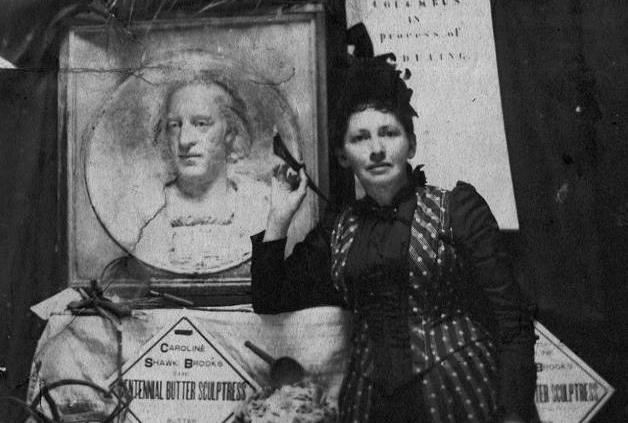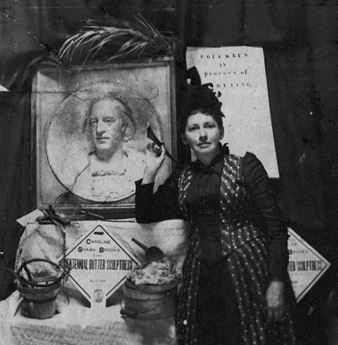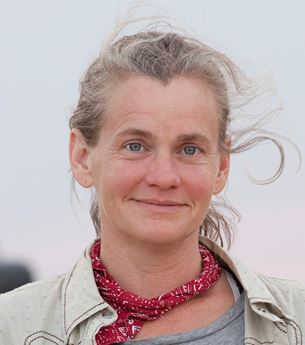

Dairy Queen
March 29, 2019
By Erika Nelson, HK Speakers Bureau
Caroline Shawk Brooks was the pioneer of butter sculpture, a tradition which survives today throughout the Midwest, featured at any state fair worth its salt. Gaining worldwide recognition at the 1876 Centennial Exhibition in Philadelphia for her sculptural handiwork, an honor rarely realized by female practitioners of the plastic arts, Caroline’s path to prominence in the traditionally male world of sculpture was hard won. Hard won, but deliciously deserved, and doubly amazing for her choice of medium: butter.
From her start as a farmwife in Helena, Arkansas, Caroline was familiar with the tradition of butter molding: placing newly churned butter into a wooden mold which had been carved with a low-relief pattern, which would result in an artistically formed or embellished butter sculpture. Caroline recalled making her first butter sculpture in 1867, “the year the cotton crop failed.” However, she sculpted the butter rather than using a pre-made butter form, shaping it into a shell. She started selling her butter sculptures to supplement the family income, expanding her repertoire into animals, and then a portrait in 1873, produced for a church fair. From there people started noticing (and commissioning) sculptures, enabling Caroline to hone her craft, creating portraits and busts as ethereal and fragile as her chosen medium.
Her most famous butter portrait, oft-captured in cabinet cards and stereographs, is Dreaming Iolanthe. She said that she had a choice one day: read a recently borrowed book, King Rene’s Daughter, or make the butter. She chose to read that day, and was moved by the story of blind Princess Iolanthe. Caroline then took up the churn, and with the new batch of butter, sculpted the last moment of the innocence of Iolanthe, the princess who would soon awaken to the knowledge that her blindness wasn’t a universal condition. Brooks took her Dreaming Iolanthe portrait with her on a family visit to Cincinnati, where it ended up in an art exhibition, drawing 2,000 people over a two-week span to view the wonder worked in butter.
From there, the sculpture was in much demand, and was placed in the Woman’s Pavilion of the 1876 Centennial Exhibition. People were so impressed with the piece that Caroline was asked to move to the main pavilion. From her success at the Exhibition, Caroline traveled to Europe to pursue training in sculpture, becoming a well-recognized carver working in marble, yet still choosing butter as her preliminary modeling medium for its workability. After Caroline’s breakthrough at the Philadelphia Centennial Exhibition, many dairy-heavy states adopted butter sculptures as a part of their Chicago 1893 World’s Colombian Exhibition displays, with the tradition trickling down into the state fair circuit. From farmhouse to fame, Caroline Shawk Brooks utilized the ordinary to create the extraordinary, transcending origins of both station and medium, molding a niche creative industry that continues to transform the commonplace.
Join the Movement of Ideas
Bring Erika's presentation, "Transforming the Commonplace: Seed Portraits, Hair Wreaths, and Butter Sculptures," or one of the many women's history topics in the Movement of Ideas Speakers Bureau to your community.





